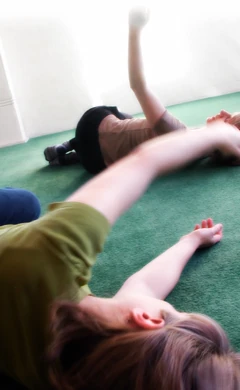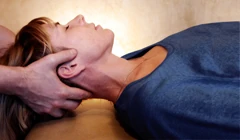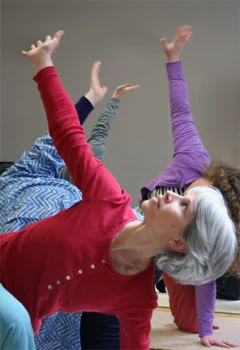What is Feldenkrais? Part Two
Monday, January 22, 2018, 11:55 AM
How to Incorporate Feldenkrais® into Your Wellness Plans
In What is Feldenkrais? Part One, we explored the principles and framework of the Feldenkrais Method.

Photographer: Jonathan Thrift. Used with permission of the Feldenkrais Guild UK.®
In summary, Feldenkrais ® is the examination of musculoskeletal conditions, issues within the nervous system, and recurring pain from repetitive stress injuries. More simply, it is a method of exploring movement and teaching the body what optimal functioning feels like.
Practitioners work with clients to stimulate the nervous system’s innate sensory motor activities (how the client naturally moves). Once ineffectual movements are identified, the student is taught new ways of moving that will help alleviate stress, increase flexibility, and reduce pain.
The Feldenkrais Guild UK® explains that movement education is centered on one question: how do your habits of movement help you, but at the same time stand in the way of doing better?
You can practise Feldenkrais® every day by being conscious of how you sit and stand, observing changes in your breathing and vision in response to certain movements, and noting pain when you move.
When you find a way of moving that feels good and relieves discomfort, intentionally repeat those movements; eventually your body will adopt them as its innate way of performing tasks.
You can also practice Feldenkrais® with a practitioner during either an individual session or a group session.
Individual Sessions
Individual sessions are referred to as Functional Integration. Functional Integration sessions are customized to the individual needs of the client and are designed to address their particular habits of moving.

Photographer: Jonathan Thrift. Used with permission of the Feldenkrais Guild UK®.
Individual sessions are recommended for those who require a more customized approach. This includes people who are recovering from an injury, are engaged in high-level sports training, or have mobility issues. Individual sessions are also an option if you simply prefer a one-on-one, personal learning environment.
In a typical one-on-one session you will sit or lie on a low, padded table. The instructor will use touch and verbal cues to guide you through various movement patterns, encouraging you to connect to the movement patterns so you can continue integrating them into your daily life after the session.
Once a student has gained awareness of what their personal movement habits are and how to optimize them, they may choose to attend a group session instead of an individual one.
Group Sessions

Photographer: Jonathan Thrift. Used with permission of the Feldenkrais Guild UK®.
Group sessions are referred to as Awareness Through Movement classes. Theses classes offer more general movement education to participants, specifically how to increase coordination, balance, and flexibility.
Over time, group sessions will explore a variety of movements and students will be introduced to key movement principles. Each session begins with students lying or sitting on the floor.
The teacher will guide the class to slowly explore different movement patterns. Repetition and familiarization with these movements will allow these movements to be integrated effectively into everyday life.
As the class progresses, the students will work through movements while standing or balancing.
How You Can Benefit from Feldenkrais®
The goal of Feldenkrais® movement education is to teach students to move intelligently and with proper alignment. If you suffer from daily aches and pains, poor posture, poor coordination, or limited flexibility, Feldenkrais® classes are worth looking into.

